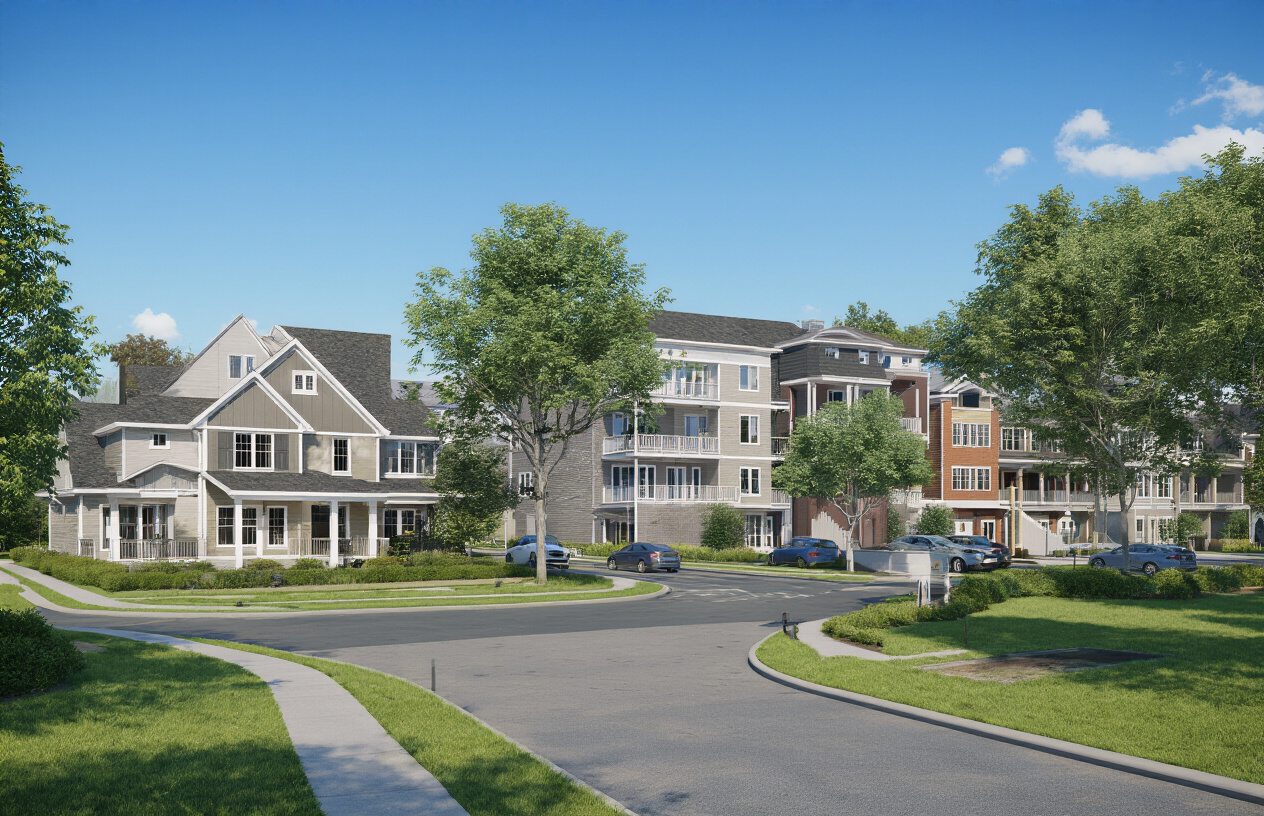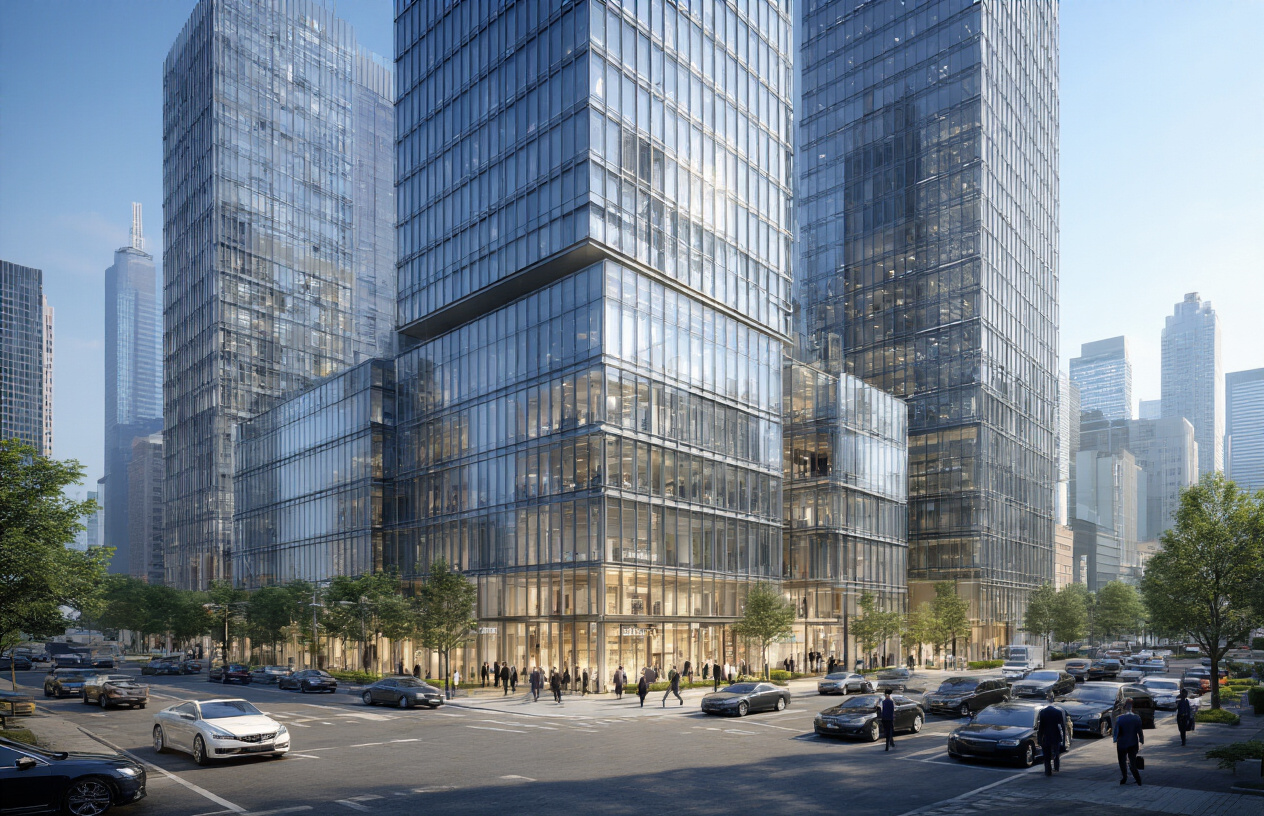What Type of Real Estate Makes the Most Money?
Real estate investors want to know which property types deliver the biggest returns on their investment. This guide is for new and experienced investors looking to maximize profits and build wealth through real estate.
We’ll break down the most profitable real estate investments across different categories. You’ll discover how commercial real estate returns often outperform residential properties, plus learn about specialized property investments that many investors overlook. We’ll also explore real estate investment trusts REIT options for passive income and identify the geographic markets where your money works hardest.
By the end, you’ll know exactly which high yield real estate properties match your budget, risk tolerance, and profit goals.
Residential Real Estate Investment Opportunities

Single-family rental properties for steady cash flow
Single-family homes represent one of the most profitable real estate investments for beginners and seasoned investors alike. These properties typically generate monthly rental income ranging from 8-12% annual returns in many markets, making them ideal for building passive real estate income strategies. The beauty of single-family rentals lies in their simplicity – you deal with one tenant, one lease, and straightforward maintenance issues.
Residential property investment profits from single-family homes come from two sources: monthly cash flow and long-term appreciation. Cash flow happens when rental income exceeds all expenses including mortgage payments, property taxes, insurance, and maintenance costs. Most successful investors target properties where rent covers at least 1.2 times the total monthly expenses.
Location drives profitability more than anything else. Properties near good schools, employment centers, and public transportation command higher rents and attract quality tenants. Single-family homes also offer easier exit strategies – you can sell to investors or owner-occupants, giving you more potential buyers when it’s time to cash out.
Multi-family properties for scalable income streams
Multi-family properties deliver high yield real estate properties through economies of scale. A duplex, triplex, or small apartment building generates multiple income streams from one investment, reducing vacancy risk compared to single-family homes. When one unit sits empty, the others continue producing income.
The numbers often work better with multi-family properties. Banks typically offer favorable financing for properties with 2-4 units, allowing investors to secure conventional loans with as little as 20-25% down. Beyond four units, properties qualify as commercial real estate, opening doors to different financing options and potentially higher returns.
Multi-family investments also create natural appreciation through forced appreciation. By improving the property, raising rents, or reducing expenses, you directly increase the property’s value. Commercial properties get valued based on their income potential, so a $100 monthly rent increase across four units can boost property value by $15,000-20,000 depending on local cap rates.
Fix-and-flip strategies for quick profit generation
Flipping houses offers the fastest path to substantial profits in real estate, with successful flippers earning 15-25% returns on their investment within 6-12 months. This strategy involves purchasing undervalued properties, renovating them, and selling quickly for a profit. The key lies in buying right – finding properties priced below market value due to condition, location, or seller circumstances.
Successful flippers follow the 70% rule: never pay more than 70% of the after-repair value minus renovation costs. For a house worth $200,000 after repairs needing $30,000 in work, the maximum purchase price would be $110,000. This formula provides enough margin to cover unexpected repairs, holding costs, and profit.
Speed determines profitability in flipping. Every month you hold a property costs money in utilities, insurance, taxes, and loan payments. Professional flippers aim to complete renovations within 60-90 days and list properties immediately. The most profitable flips focus on cosmetic improvements – paint, flooring, kitchens, and bathrooms – rather than major structural work.
Luxury home investments for high-value appreciation
Luxury real estate investments target properties in the top 10% of local markets, typically featuring premium locations, unique architecture, or exceptional amenities. These high yield real estate properties offer substantial appreciation potential, often outpacing broader market gains during economic upturns.
Luxury properties benefit from limited supply and wealthy buyer demand. High-net-worth individuals often purchase luxury homes as lifestyle investments, caring less about price and more about location, privacy, and prestige. This dynamic can drive prices higher than fundamental analysis might suggest.
The rental market for luxury homes also provides unique opportunities. Short-term rentals through platforms like Airbnb can generate premium income from luxury properties in desirable locations. A luxury home that rents for $300-500 per night can produce monthly income equivalent to several traditional rental properties.
However, luxury investments require larger capital commitments and longer holding periods to realize maximum appreciation. These properties also face higher carrying costs and potentially longer sale times during market downturns, making them better suited for investors with substantial capital and longer investment horizons.
Commercial Real Estate for Maximum Returns

Office Buildings with Long-Term Lease Agreements
Office buildings represent one of the most stable commercial real estate returns opportunities available to investors. The key advantage lies in securing tenants with multi-year lease commitments, typically ranging from 5 to 15 years. These extended agreements provide predictable cash flow and reduce vacancy risks significantly compared to residential properties.
Corporate tenants often sign triple-net leases, where they cover property taxes, insurance, and maintenance costs in addition to base rent. This structure shifts operational responsibilities to tenants while guaranteeing consistent income for property owners. Class A office buildings in central business districts command premium rents, especially when featuring modern amenities like high-speed internet infrastructure, updated HVAC systems, and flexible floor plans.
The pandemic reshaped office demand patterns, creating opportunities for savvy investors. Medical office buildings and flex spaces adapted for hybrid work models show strong performance. Properties near transportation hubs maintain higher occupancy rates as companies prioritize accessibility for employees.
Retail Spaces in High-Traffic Locations
Strategic retail investments in prime locations generate substantial returns through percentage rent structures and long-term appreciation. Successful retail properties combine guaranteed base rent with percentage clauses that increase income as tenant sales grow.
Shopping centers anchored by essential businesses like grocery stores, pharmacies, and service providers demonstrate resilience across economic cycles. These necessity-based tenants maintain steady foot traffic regardless of broader retail trends. Strip malls with drive-through restaurants, convenience stores, and personal services create multiple income streams while requiring minimal management overhead.
Location analysis becomes critical for retail success. Properties within walking distance of residential neighborhoods, near major employers, or along busy commuter routes consistently outperform isolated locations. Corner lots with high visibility and easy parking access command premium rents and attract quality tenants willing to sign longer lease terms.
Industrial Properties and Warehouses
The e-commerce boom transformed industrial real estate into one of the most profitable real estate investments categories. Warehouses, distribution centers, and logistics facilities experience unprecedented demand as companies expand their supply chain capabilities.
Last-mile delivery facilities near urban centers generate particularly strong returns. These properties serve the final step in the delivery process, making them essential infrastructure for online retailers. Cold storage facilities for food distribution and pharmaceutical warehouses represent specialized niches with limited competition and higher rent premiums.
Manufacturing properties with heavy power infrastructure, loading docks, and ceiling heights above 24 feet attract long-term industrial tenants. These specialized features create barriers to entry for competitors while ensuring tenant retention. Industrial properties typically require lower maintenance than other commercial types, improving net operating income margins.
Mixed-Use Developments for Diversified Income
Mixed-use properties combine multiple property types within single developments, creating diversified income streams that reduce investment risk. These projects typically integrate retail spaces on ground floors with office space or residential units above, maximizing land utilization and rental income potential.
The diversification benefits become apparent during economic downturns when different tenant types face varying market pressures. While retail tenants might struggle, office or residential components can maintain stable occupancy. This balance creates more consistent cash flow compared to single-use properties.
Transit-oriented mixed-use developments near subway stations or bus rapid transit lines command premium rents across all components. Tenants value walkable environments where employees can access restaurants, services, and transportation without driving. These locations also benefit from municipal incentives and zoning advantages that support higher density development.
Smart mixed-use design incorporates shared parking facilities, common areas, and complementary tenant mixes that create synergies. For example, ground-floor restaurants benefit office workers during lunch hours while serving residential tenants during evenings and weekends.
Specialized Property Types with High Profit Potential

Short-term rental properties in tourist destinations
Tourist destinations offer some of the most profitable real estate investments when managed correctly. Properties in popular vacation spots like beach towns, ski resorts, and major tourist cities can generate significantly higher income than traditional long-term rentals. The key advantage lies in charging premium nightly rates that often exceed monthly rental income within just a few weeks.
Popular platforms like Airbnb and VRBO have revolutionized this market, making it easier for property owners to reach travelers directly. Beach properties in Florida, mountain cabins in Colorado, and urban apartments in cities like New York or San Francisco can command $150-500 per night depending on location and amenities.
Success requires strategic property selection near attractions, excellent property management, and consistent marketing efforts. High-yield real estate properties in tourist areas typically see occupancy rates of 60-80% during peak seasons. However, investors must factor in higher maintenance costs, frequent turnover, and seasonal income fluctuations.
Student housing near universities and colleges
Student housing represents one of the most stable specialized property investments due to consistent demand and renewable tenant cycles. Properties within walking distance of major universities often maintain 95-100% occupancy rates throughout the academic year.
The most profitable real estate investments in this sector focus on multi-bedroom houses or apartment buildings that can be rented by the room. This strategy maximizes rental income, as individual room rates often total more than what the entire property would rent for as a single unit. For example, a four-bedroom house renting at $2,000 monthly as a family home might generate $3,200 when rented to four students at $800 per room.
Key success factors include:
- Location proximity to campus (ideally within 1-2 miles)
- Property condition that appeals to safety-conscious parents
- Amenities like high-speed internet, laundry facilities, and parking
- Professional management to handle tenant turnover and maintenance
Parent co-signers provide additional security, reducing default risks compared to other rental markets.
Senior living facilities for growing market demand
The aging Baby Boomer population creates unprecedented demand for senior housing, making this sector increasingly attractive for specialized property investments. Assisted living facilities, independent senior communities, and memory care centers offer substantial profit potential with strong demographic tailwinds.
Senior housing typically generates higher per-unit income than traditional residential properties due to additional services and amenities. Assisted living facilities can charge $3,000-6,000 monthly per unit, while independent living communities range from $2,000-4,500 monthly. These figures often exceed traditional apartment rents by 50-100% in the same markets.
Investment options include:
- Ground-up development of new facilities
- Converting existing properties like hotels or office buildings
- Purchasing existing facilities for operational improvements
- Sale-leaseback arrangements with established operators
The sector requires specialized knowledge of healthcare regulations, licensing requirements, and operational complexities. However, the combination of recurring monthly income, long-term demographic trends, and limited competition from traditional residential properties makes senior housing one of the highest-potential specialized property investments for sophisticated investors.
Real Estate Investment Trusts and Passive Income Strategies

Publicly traded REITs for instant diversification
Real estate investment trusts offer one of the most accessible ways to dive into real estate investment trusts REIT opportunities without massive capital requirements. Trading on major stock exchanges like regular stocks, REITs provide exposure to vast property portfolios spanning office buildings, shopping centers, apartments, and warehouses. The beauty lies in professional management handling everything from tenant relations to property maintenance while you collect quarterly dividends.
Most REITs distribute 90% of their taxable income to shareholders, creating reliable passive real estate income strategies that often outperform traditional dividend stocks. Popular options include Realty Income Corporation, known for monthly payouts, and Prologis, dominating the logistics real estate sector. Healthcare REITs like Welltower capitalize on aging demographics, while data center REITs ride the cloud computing wave.
The instant liquidity advantage sets publicly traded REITs apart from direct property ownership. You can buy or sell shares during market hours, avoiding the lengthy processes of traditional real estate transactions. Diversification happens automatically since most REITs own hundreds of properties across multiple markets, reducing risk compared to owning a single rental property.
Private real estate funds for accredited investors
Accredited investors with $1 million net worth or $200,000+ annual income unlock exclusive access to private real estate funds targeting maximum return real estate types. These funds typically focus on value-add opportunities, ground-up development, or distressed properties that public REITs avoid due to complexity or risk profiles.
Private funds often target 15-25% annual returns through strategic improvements like renovations, lease restructuring, or repositioning properties for higher-value uses. Opportunity zones funds provide additional tax benefits by deferring capital gains when investing in economically distressed areas. Core-plus funds blend stable income properties with moderate value-add components, while opportunistic funds chase the highest returns through major redevelopments or market disruptions.
The trade-off involves longer commitment periods, typically 5-10 years, with limited liquidity during the investment term. Minimum investments usually start at $50,000-$250,000, creating barriers that keep these most profitable real estate investments exclusive. Due diligence becomes crucial since private funds face less regulatory oversight than public alternatives.
Crowdfunding platforms for smaller initial investments
Real estate crowdfunding democratizes access to commercial real estate returns and high yield real estate properties with minimums starting around $1,000-$5,000. Platforms like Fundrise, RealtyMogul, and YieldStreet aggregate smaller investor contributions to fund projects previously available only to institutions and wealthy individuals.
These platforms offer diverse investment structures from debt instruments paying 8-12% annually to equity positions in specific properties or portfolios. Debt investments provide more predictable returns with first lien positions on properties, while equity investments offer higher upside potential but greater risk exposure. Some platforms create diversified portfolios automatically, while others allow investors to select individual projects.
Geographic diversification becomes effortless through crowdfunding, letting investors access markets like Austin tech hubs or Miami luxury developments without local expertise. The platforms handle property selection, due diligence, and ongoing management while providing regular updates and financial reporting.
| Platform Type | Minimum Investment | Expected Returns | Liquidity |
|---|---|---|---|
| Public REITs | $100-500 | 6-12% | Daily trading |
| Private Funds | $50,000+ | 15-25% | 5-10 year lock |
| Crowdfunding | $1,000-5,000 | 8-18% | Limited/quarterly |
The key advantage lies in professional management and reduced barriers to entry, though investors sacrifice direct control over property decisions and face platform-specific risks including potential business failure or regulatory changes affecting crowdfunding operations.
Geographic Markets That Maximize Investment Returns

Emerging markets with rapid population growth
Growing cities and regions experiencing population booms often present some of the most profitable real estate markets for savvy investors. Cities like Austin, Texas, Nashville, Tennessee, and Phoenix, Arizona have consistently delivered strong returns as job growth attracts new residents faster than housing supply can keep up. These markets typically offer lower entry costs compared to established metros while delivering appreciation rates that can exceed national averages by significant margins.
The key to success in emerging markets lies in timing and location selection within the broader metro area. Areas near planned infrastructure projects, new corporate headquarters, or expanding university campuses tend to see the strongest gains. Population growth drives rental demand, making these markets particularly attractive for buy-and-hold strategies focused on cash flow generation.
Established metropolitan areas with stable appreciation
Major metropolitan areas like New York, Los Angeles, San Francisco, and Washington D.C. offer different advantages despite higher entry costs. These markets provide stability and consistent appreciation over long-term holding periods. While cash flow might be lower due to higher purchase prices, the wealth preservation and steady growth potential make these areas attractive for investors seeking reliable returns.
Established metros also offer diverse property types and neighborhoods at various price points. From luxury condos in downtown cores to single-family homes in suburban markets, investors can find opportunities that match their risk tolerance and investment goals. The depth of these markets also means better liquidity when it’s time to sell.
International markets for currency diversification
Investing in international real estate markets provides portfolio diversification beyond domestic currency exposure. Markets like Toronto, London, Dubai, and major German cities offer stable real estate sectors with different economic cycles than U.S. markets. This geographic diversification can help protect against regional economic downturns and currency fluctuations.
International investments require additional due diligence regarding local laws, tax implications, and market conditions. However, many global cities offer strong rental yields and appreciation potential, particularly in areas with growing expatriate populations or international business centers.
Opportunity zones with tax advantages
Opportunity Zones, established through the Tax Cuts and Jobs Act, provide significant tax benefits for investors who reinvest capital gains into designated low-income communities. These zones offer the potential to defer, reduce, and even eliminate capital gains taxes on both the original investment and appreciation within the opportunity zone investment.
The most profitable real estate investments in opportunity zones typically involve ground-up development or substantial rehabilitation projects in areas showing signs of economic revitalization. Cities like Baltimore, Detroit, and parts of Los Angeles have opportunity zones that combine tax advantages with strong fundamentals for future growth, creating compelling investment scenarios for those willing to take on development risk.

The real estate world offers plenty of ways to build wealth, but the biggest returns usually come from commercial properties like office buildings, retail spaces, and industrial facilities. These investments demand more capital upfront, but they typically deliver higher rental yields and longer lease terms that create steady cash flow. Residential properties remain a solid choice for beginners, especially in growing markets where property values climb consistently over time.
Your success really depends on matching your investment strategy with your budget, risk tolerance, and how hands-on you want to be. REITs give you exposure to high-performing properties without the headaches of direct ownership, while specialized properties like storage facilities or medical buildings can generate exceptional returns in the right locations. Focus on emerging markets with strong job growth and population increases, and don’t put all your money in one type of property. The most profitable real estate investors diversify across different property types and geographic areas to maximize their earning potential.




Join The Discussion